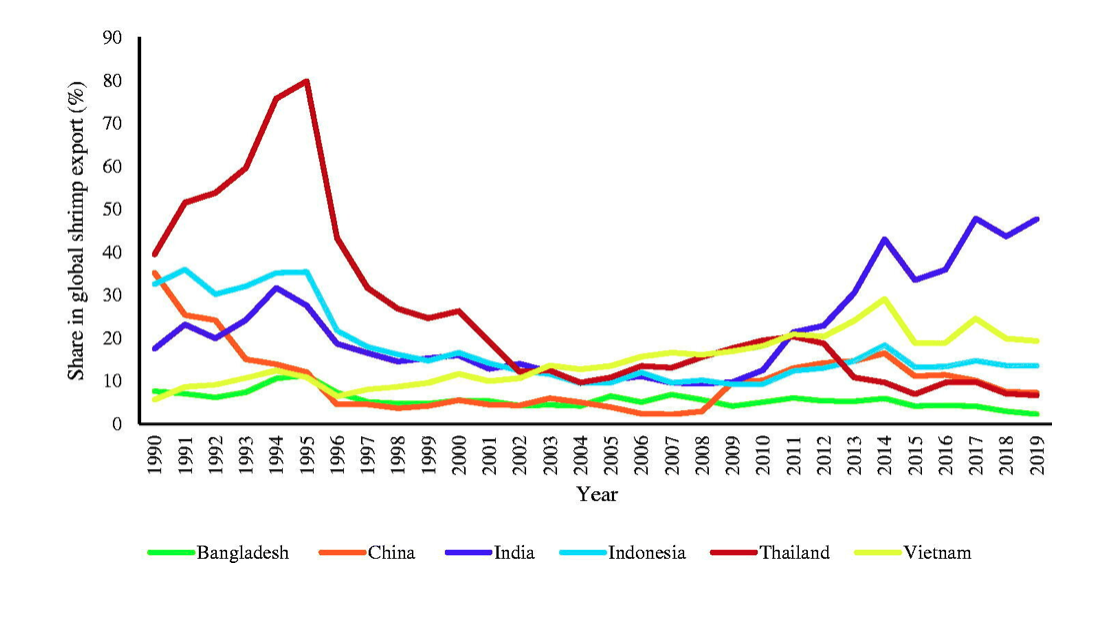
Authors: Md. Akhtaruzzaman Khan, Md. Emran Hossain, Md. Sayemul Islam, Md. Takibur Rahman, and Madan Mohan Dey
Abstract
This study aims to explore the shrimp export competitiveness of Bangladesh, China, India, Indonesia, Thailand, and Vietnam time spanning from 1990 to 2019. However, emphasizing Bangladesh as a case country, this research looks into the factors influencing shrimp export competitiveness taking into account macroeconomic and policy variables. To do so, we used the recently developed Revealed Symmetric Comparative Advantage (RSCA) index to quantify export competitiveness, while a novel dynamic autoregressive distributed lag (ARDL) simulation approach to determine the factors driving shrimp export competitiveness. The findings show that all of the aforementioned countries seem to have some degree of shrimp export competitiveness during the study period, whereas Chain has entirely lost its export competitiveness after 2004. However, Bangladesh's shrimp export competitiveness has dipped marginally in recent years, despite continuous growth in competitor countries such as India, Indonesia, and Vietnam. Further, economic globalization, institutional quality, trade openness, number of trade agreements, and trade freedom all have a favorable impact on Bangladesh’s shrimp export competitiveness in the long-run, whereas the international or exporting price of shrimp has a detrimental influence in short-and long-run. Finally, these findings may have implications for a future shrimp export from Bangladesh and some policy recommendation are presented.
Read the full publication at https://doi.org/10.1080/13657305.2022.2089772.
Published June 24, 2022

